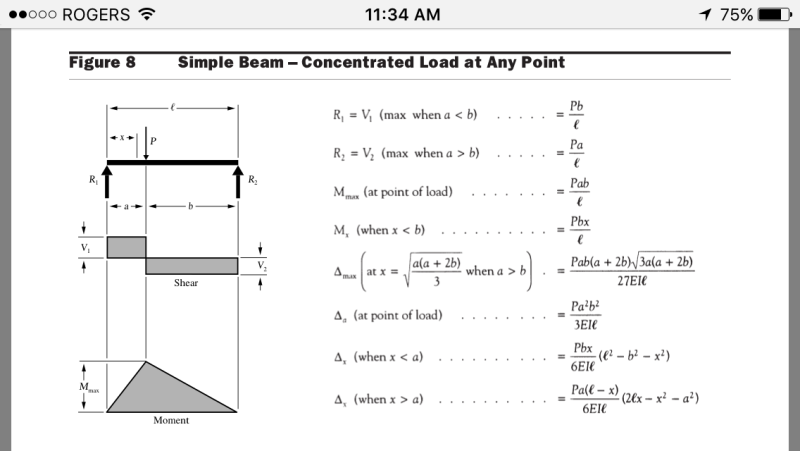truckdesigner
Structural
- Oct 19, 2009
- 42
Can anyone out there please help me?
For ages now I've been looking for simple formulas for calculating Mmax for simple beams with more than 2 point loads, for example multiple beams on girders. Text books etc only ever seem to list formulas for 2 loads.
What if I have 5, 6, 7 etc?
I did find one set of notes on-line that gave me the formula for 4 equally spaced point loads (equal loads): 3*Pl*L/5, but would like to know for more than 4 loads.
Appreciate any assistance.
Paul.
For ages now I've been looking for simple formulas for calculating Mmax for simple beams with more than 2 point loads, for example multiple beams on girders. Text books etc only ever seem to list formulas for 2 loads.
What if I have 5, 6, 7 etc?
I did find one set of notes on-line that gave me the formula for 4 equally spaced point loads (equal loads): 3*Pl*L/5, but would like to know for more than 4 loads.
Appreciate any assistance.
Paul.


![[idea] [idea] [idea]](/data/assets/smilies/idea.gif)
![[r2d2] [r2d2] [r2d2]](/data/assets/smilies/r2d2.gif)